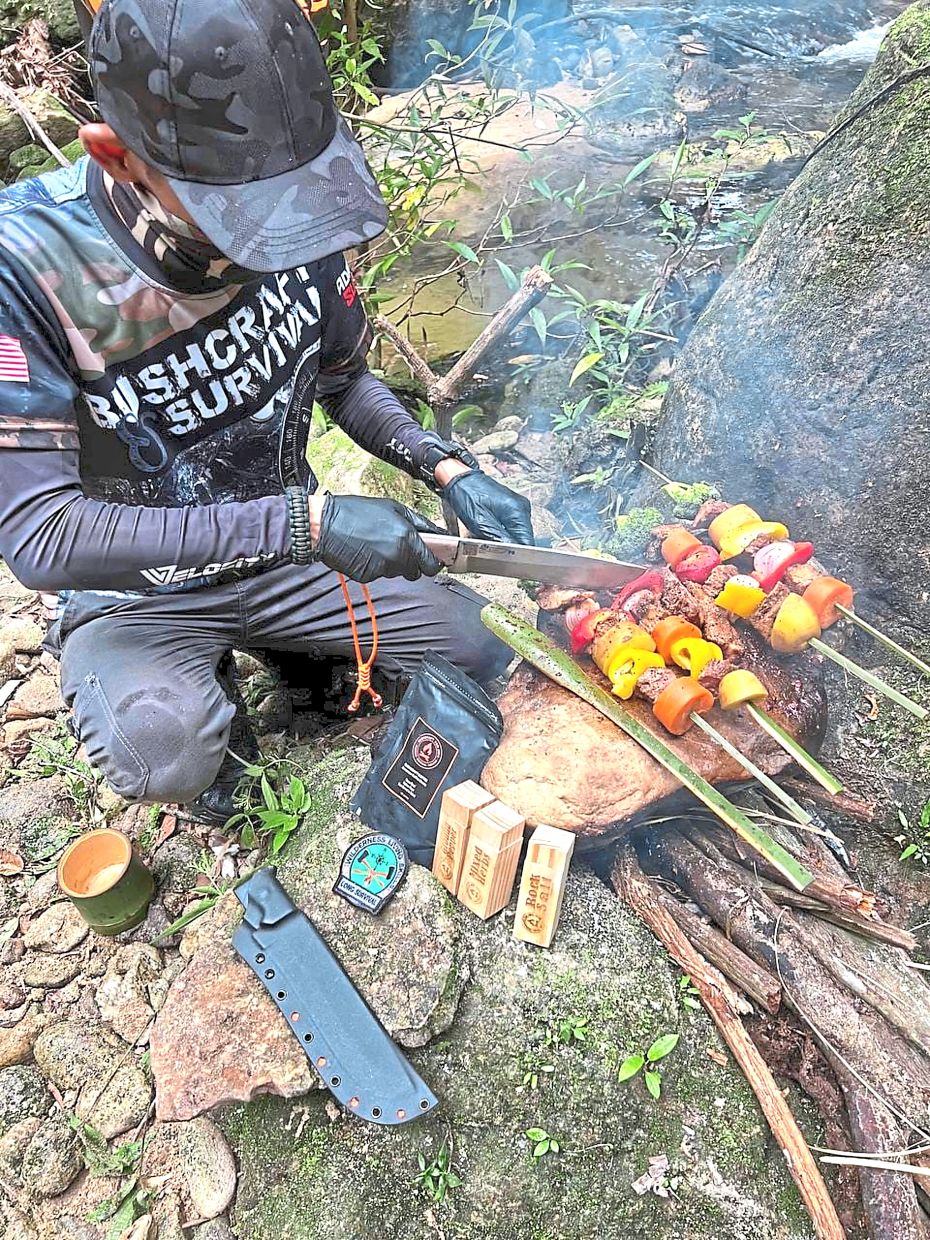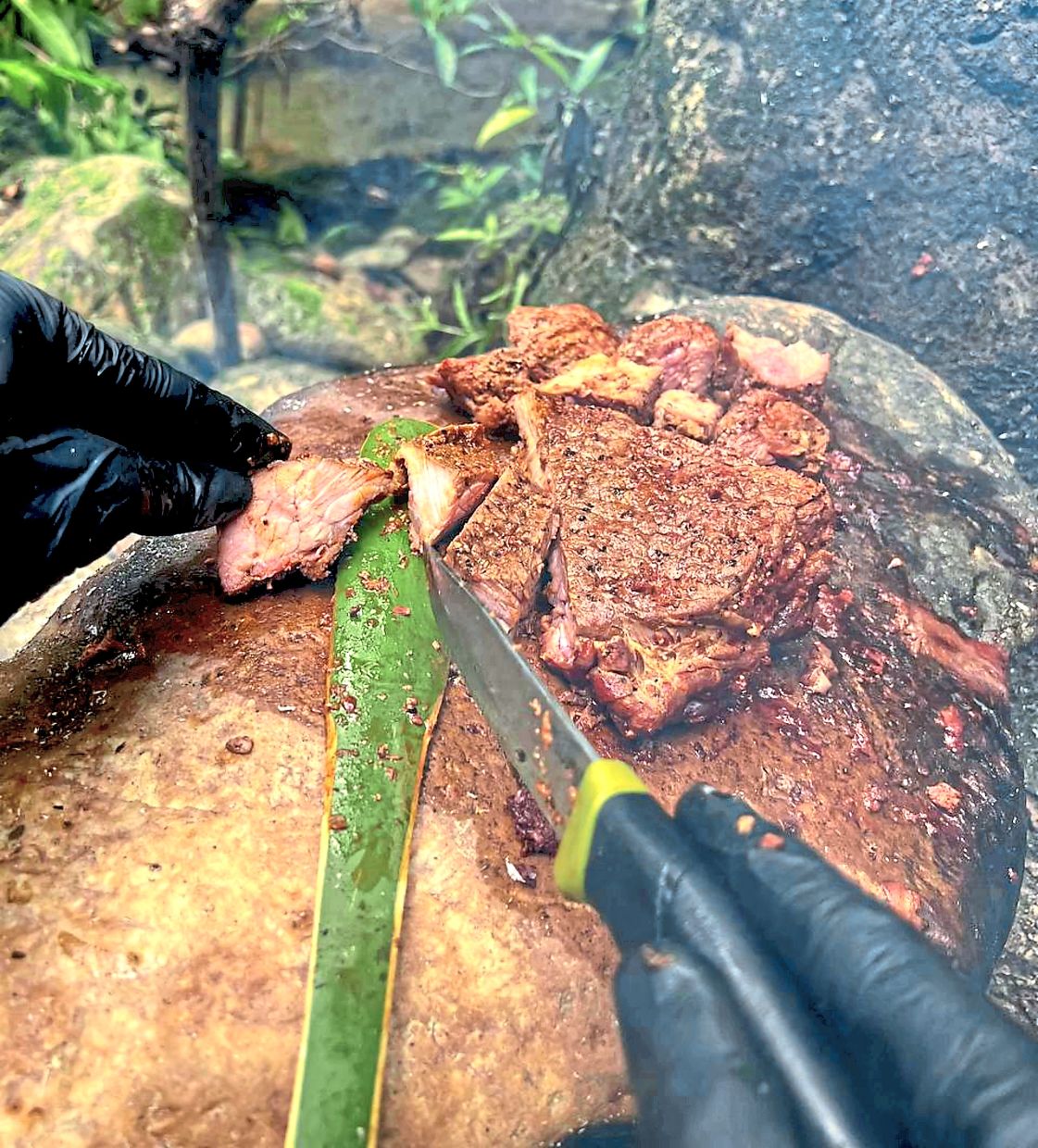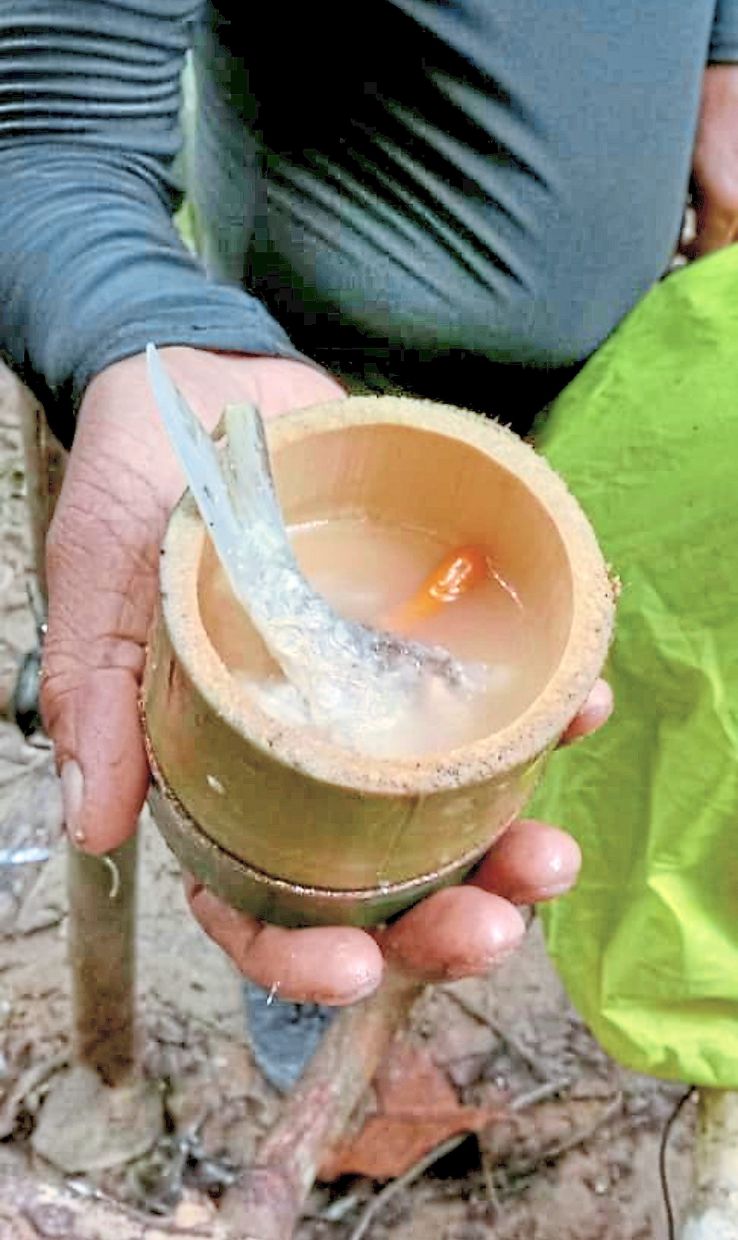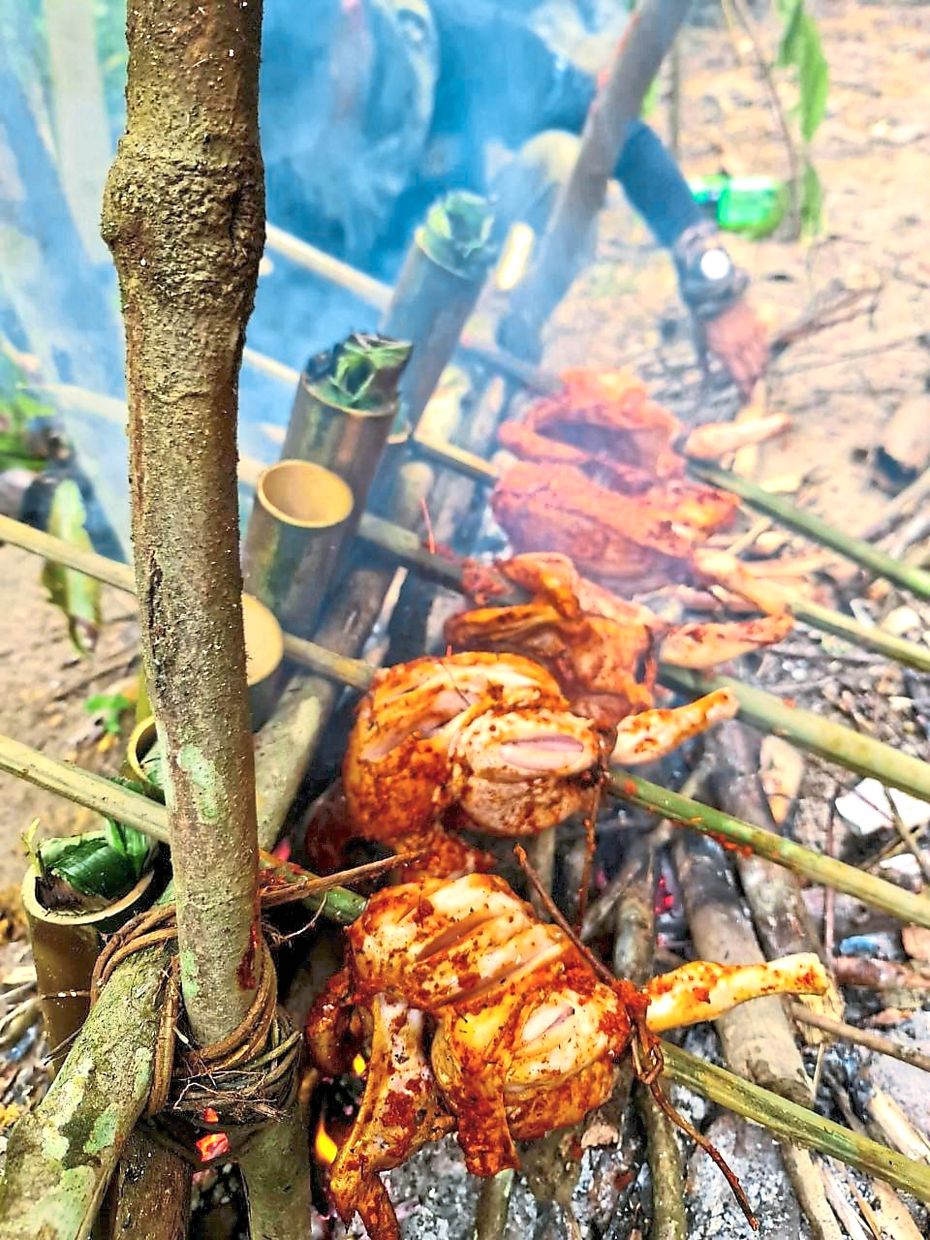A master survivalist reveals how to cook gourmet jungle meals using bamboo, rocks and leaves – no pots or pans needed!
On extended jungle adventures – whether for fishing, exploring or scientific expeditions – lugging pots, pans and stoves on top of rations can be a burden.
It’s even tougher when the journey involves several people, making portable camping gear impractical for cooking meals for everyone.
This is where backwoods cooking techniques become essential.
Survival expert Long Wahab, 44, explains how to use bamboo, tree saplings, leaves and rocks as cooking tools in the wild.
Long, now living in Selangor, spent his youth in Sintok, a remote area of Kedah near the Thai border.
“I used to follow my father and uncles into the jungle to search for medicinal herbs and roots. We only brought a parang and a lighter,” he recalls.
“We’d spend three to four days deep in the jungle, never bringing extra clothes because we had so many herbs to carry back. That’s how I learned to live off the land and cook without a single pot.”
A thick, green bamboo segment can serve as a pot or a long, narrow frying pan.
“You can even pour oil into it and fry eggs. It’s almost like a non-stick pan. We’ve even cooked curry in bamboo,” says Long.
Cutting the bamboo to create an opening with a split section as a lid requires skill.
Long can do it in under a minute, but novices might want to bring a foldable saw.
Bamboo is also great for crafting spoons, cups, ladles and cutting boards.
Another favourite of Long’s is a flat river rock. Propped over a fire, it works just like a griddle.
With that, he can even fix up a hearty piece of steak.
“Not all river rocks are suitable, though. Some will crack when heated. Look for smooth, heavy rocks with a wide, level side. Tap it with a smaller rock – if it sounds hollow, don’t use it.
“Avoid rocks with visible cracks, too,” he advises.
Large leaves make excellent cooking tools, especially those from the lemba shrub, also called weevil-wort. Its long leaves are so tough that you can clamp them between branches and fill them with water.
“You can boil water in a lemba leaf over embers and it won’t burn away,” Long says.
Almost any large leaf can serve as a tray, wrap or plate, but Long cautions against leaves with fine hairs, which may cause allergic reactions or contain toxins.
Wild banana leaves are ideal, but only use the top, glossy side.
“Heat them slightly over a fire to make them supple and prevent splitting,” he suggests.
Before attempting backwoods cooking, Long recommends learning proper parang techniques.
“It’s important to know how to finely cut wood and bamboo to shape them for your needs.
“If you’re in a large group, it’s helpful to know how to build a cooking tripod from tree saplings. You can roast fish or smoke food easily this way,” he explains.
However, he stresses the importance of responsible foraging.
“In protected forests, you can’t just cut bamboo or saplings or collect firewood. Even deadwood is part of the ecosystem,” he warns.
Travelling light by leaving cookware behind can be liberating, especially on long treks, but always check forestry regulations first.
Long now teaches backwoods cooking and survival techniques in Selangor. On social media, he’s known as “Long Survival”, sharing his vast knowledge about living off the land. To learn from him, contact 018-352 1270.














